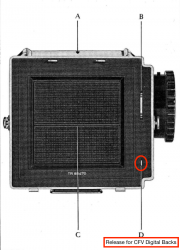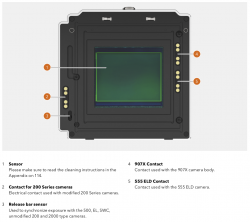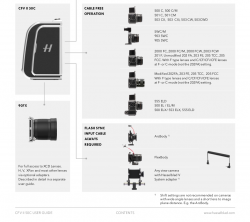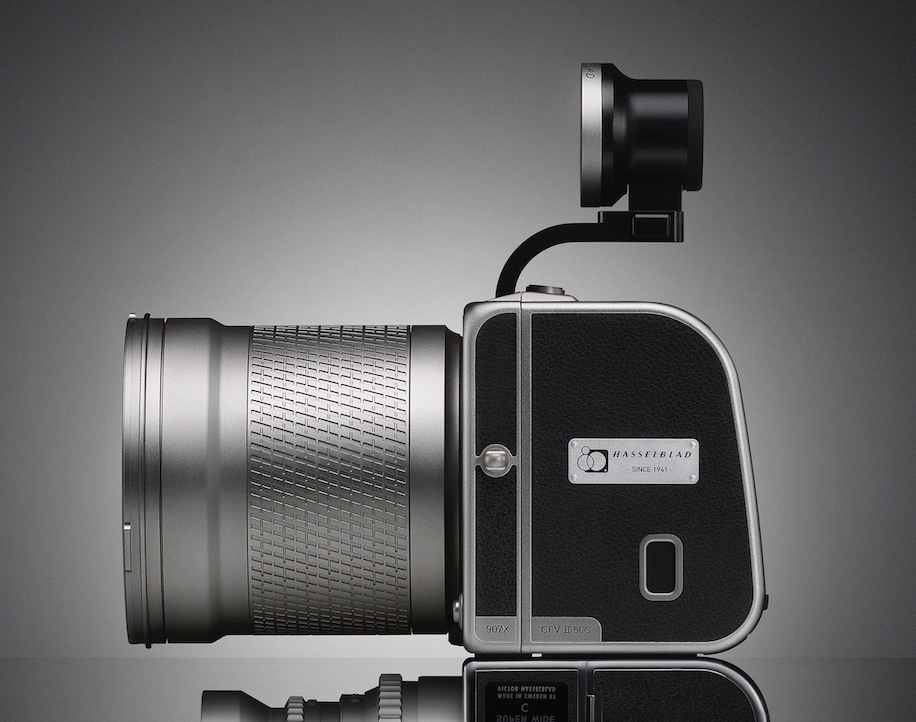TechTalk
Well-known member
In order to eliminate the need for any cables, the CFV backs use a unique triggering mechanism. The mechanism which detects the presence of a dark slide in film magazines is used to trigger CFV backs, past and present, by interrupting a tiny light beam's path to a sensor inside the back. On the attached image of the CFV II 50C sensor and interface plate, it is the illustrated connection labeled 3. This works for all of the 500 Series and any CFV back. For earlier CFV back models, check the manual for connecting with 200/2000 Series cameras.So the back is in waiting mode until you shoot and then in the moment of the shutter being open / mirror up does an electronic exposure? How does it know when this happens?
There are also optional short interface cables for motor driven cameras. They can be used between a CFV back and motor driven cameras which will allow remote triggering from Phocus when shooting tethered. Additionally, there are contacts (labeled 2, 4, and 5 below) for specific camera models which provide for direct electronic triggering of the back.
When using mechanical release from a camera body: as you press in on the shutter release, a pin extends from the lower right corner of the back plate on the camera body (circled in red below) and prevents release if a dark slide is inserted in a film magazine or triggers a CFV back. It's a clever way to eliminate the need for any cables with cameras ranging from a 1957 500C to a 503CW purchased in 2013.
See attachments for illustration.



Last edited:



